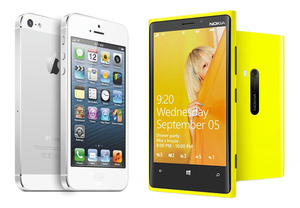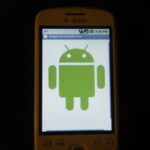With the release of the Motorola Droid a855 came the phrase “iPhone killer.” Technology enthusiasts made a big deal of the fact that there was finally a smartphone on the market that could really compete with-and maybe even beat-the level of success held by the iPhone. The Motorola Droid runs the Android operating system, which is the same system also used by the sleek Nexus One as well as both the HTC Droid Eris and several Samsung models, including the Galaxy S and the Moment. Priced at $199 with a service agreement, the Motorola Droid has pros and cons when compared to its competitors. To find out more about how the Motorola Droid a855 Android phone measures up, read on.
Droid vs. iPhone
Differences between the Android operating system and the iPhone’s operating system that most users would notice are mainly related to applications. Generally speaking, the Android operating system is recommended for those users who really want to tweak and customize their phones, while the iPhone’s OS is recommended for users who want all the basics preloaded so they can jump in and start using them right away.
There’s also a lot of talk about the fact that the iPhone offers around ten times the amount of applications in their marketplace as Android phones. This is true; however, Android fans have argued that quantity doesn’t necessarily mean quality, stating that the iPhone may have a lot of apps, but that it doesn’t mean all of them are good. Additionally, app developers working in Android can submit their applications directly to the Android marketplace and its users while developers of apps for the iPhone system must be approved or denied through Apple. This has caused many Android supporters to predict rapid growth in the number of applications available in the Android marketplace as well as a wide variety of the type of apps people can download.
Motorola Droid vs. Other Android Phones
While the Android system runs on several different phones available right now, that doesn’t mean that all of them are the same. Following are some comparisons of the Droid and other phones currently running the Android operating system.
Operating System
Not all Android operating systems are created equal. The Motorola Droid, the Google Nexus One, and the Samsung models come equipped with Android 2.1, which is the latest version of Android. This version adds features like integrated voice texting and the ability to run live wallpapers, as well as pinch-to-zoom web browser technology and support for Yahoo email. The HTC Eris runs an older version of Android, which lacks these features, although an update to 2.1 is expected for the Eris sometime in the near future.
Keyboard
Unlike most of the other phones running the Android system (except the Samsung Moment), the Motorola Droid features a slide out keyboard as well as on-screen text writing capabilities. Opinions on this feature vary among users. Some dislike the keyboard for its added bulk and weight and also its non-user-friendly layout. The Moment’s keyboard has a better design and is easier to use. However, there are some users who swear by the Droid’s slide out keyboard, stating they love it and use it regularly.
Screen
One of the things that really gives the Motorola Droid a leg up over its competition is that it features one of the largest screens of not only other phones running Android, but of all smartphones around (except perhaps the Nexus One, since its screen is around the same size as the Droid). This makes it ideal for web browsing. Moreover, the Droid’s screen is made of extremely-hard-to-break Gorilla Glass rather than just the plain old tempered glass that most smartphone screens are made of. This makes the Droid’s screen much more durable than its competition.
Speed
The Motorola Droid runs on Verizon’s 3G network and is quite fast compared to its competition. Negligible differences in speed exist between the Droid and the Nexus One, and this phone is much faster than the Droid Eris.
Camera
A 5.0 megapixel camera gives the Motorola Droid very good picture quality for a phone. While it’s still not as good as a straight up digital camera, most of your pictures will turn out quite nice as long as you’re not expecting miracles. Photos taken in darker settings tend to end up a little grainy, and action shots tend to blur. However, photos taken in the light tend to turn out vibrant, clear, and crisp.
Battery Life
Here’s where the Droid undoubtedly falls short of its competitors. Because its capabilities are no match for its power source, the battery generally only lasts anywhere from 5-8 hours. Solutions that happy Droid users have come up with include charging the phone frequently or carrying a backup battery.
Motorola has an exclusive contract with Verizon regarding this phone, so if you want to use the Droid, you’re going to have to sign up with Verizon.
Call Quality
Here’s another area where the Droid comes up short of its competition. The internet is riddled with forums where people have stated their dissatisfaction with both microphone and receiver capabilities. While it’s unclear whether the fault lies with Verizon or Motorola, problems reported include receiver noise and sounding “muffled” to those on the other line.
Resources
Priya Ganapati. Droid Users Ask: Can You Hear Me Now? Wired.
Rob Jackson. Motorola Droid Screen Protected By Gorilla Glass. Phandroid.
Adam Ostrow. Nexus One vs Droid vs iPhone [Comparison Chart]. Mashable
Kent German and Bonnie Cha. Motorola Droid (Verizon Wireless). Cnet.






